Mastering the art of Learning Management System (LMS) optimization is essential for any organization striving for efficiency and effectiveness. My extensive journey through the nuances of talent development, especially in the realm of LMS technologies, has led me to identify four key strategies that can significantly enhance the functionality and impact of your LMS. Drawing from over two decades of experience and numerous consulting projects for high-profile clients, I present a broad yet practical guide to LMS optimization.
 To summarize:
To summarize:

 Now to add some detail around the sub-processes for the ISD and LMS areas (middle of image) and then traditional roles (top row). By understanding this basic layout and processes, you can better support the operations during troubleshooting and/or optimization.
Now to add some detail around the sub-processes for the ISD and LMS areas (middle of image) and then traditional roles (top row). By understanding this basic layout and processes, you can better support the operations during troubleshooting and/or optimization.
 And finally, here are the basic roles and responsibilities associated with the image above:
And finally, here are the basic roles and responsibilities associated with the image above:
 *Please note that these images assume that the course is an eLearning course and being developed with an authoring tool that is not in the LMS.
*Please note that these images assume that the course is an eLearning course and being developed with an authoring tool that is not in the LMS.

 And in summary, here’s a short list to help you optimize your learning assets:
And in summary, here’s a short list to help you optimize your learning assets:
 Optimizing an LMS requires a balanced approach that addresses both the technological and human elements of the system. By focusing on practical and tactical strategies, organizations can enhance their LMS’s functionality, improve the learner experience, and achieve greater operational efficiency. The journey to LMS optimization is ongoing, but with the right mindset and approach, it can lead to significant gains for any organization committed to excellence in learning and development.
Optimizing an LMS requires a balanced approach that addresses both the technological and human elements of the system. By focusing on practical and tactical strategies, organizations can enhance their LMS’s functionality, improve the learner experience, and achieve greater operational efficiency. The journey to LMS optimization is ongoing, but with the right mindset and approach, it can lead to significant gains for any organization committed to excellence in learning and development.
The Essence of LMS Management
At the heart of any successful LMS lies robust management. Those responsible for overseeing the LMS must ensure it seamlessly integrates with other systems and serves the diverse needs of learners and administrators alike. However, the concept of governance often becomes a nebulous area, leading to inefficiencies. Through my experience, focusing on the practical and tactical aspects of management, such as understanding the interplay between various LMS components and empowering administrators, can drive significant improvements. Let’s take a look at four key areas:1) Empowering LMS Administrators
The role of an LMS administrator is pivotal. Yet, the challenge of finding or nurturing the perfect blend of skills within an administrator—balancing between strategic oversight and technical acumen—can be daunting. Organizations must recognize the distinct needs of their LMS operations and tailor their staffing models accordingly. Empowering administrators with the right tools and authority not only enhances their ability to manage the LMS effectively but also fosters a culture of accountability and continuous improvement. Here’s a breakdown that might be helpful: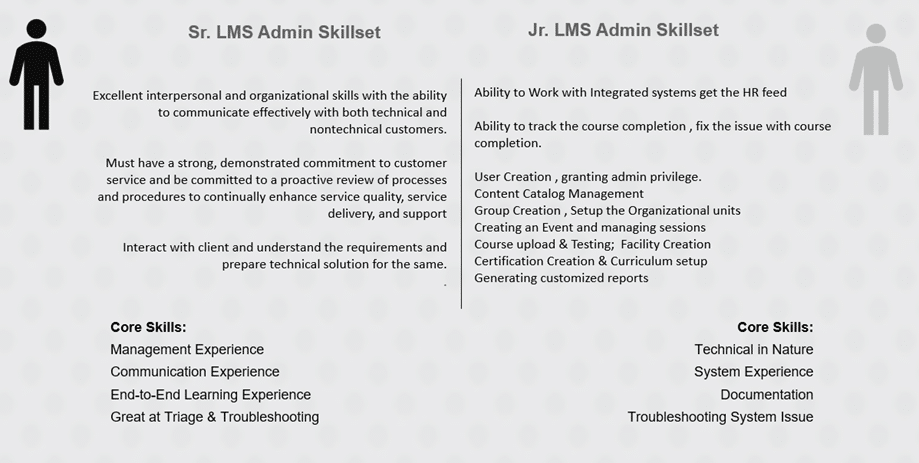 To summarize:
To summarize:
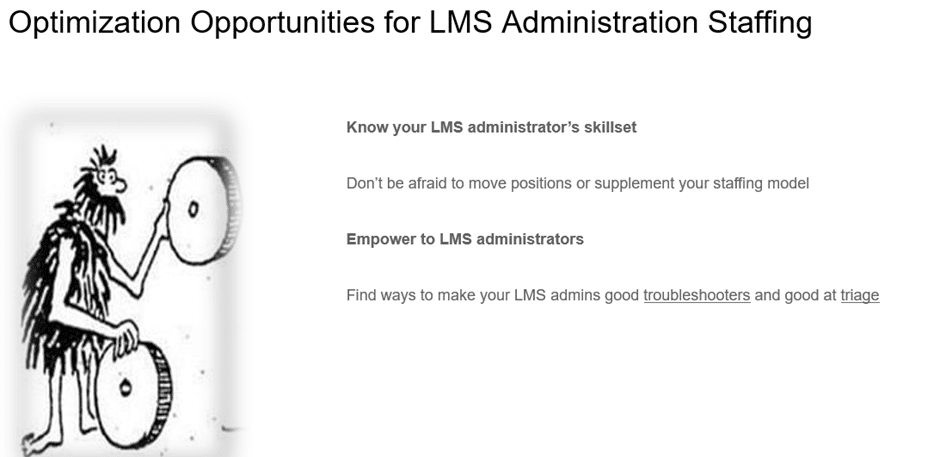
2) Mastering the Content Lifecycle
Understanding and managing the content lifecycle from creation to retirement is fundamental to LMS optimization. The ADDIE model (Analysis, Design, Development, Implementation, Evaluation) provides a solid framework for managing eLearning content. However, diving deeper into each stage, acknowledging the roles involved, and streamlining the processes can significantly reduce redundancies and enhance the learning experience. Here’s one way to map and think about the content life-cycle. Using the ADDIE Model – Analysis, Design, Development, Implement and Evaluate, you can see where learning starts with the business need (the A for analysis) and where the rest of those steps, generally relate to the Instructional Design process and LMS processes. This is a good start to see where the ADDIE steps occur in relation to major processes.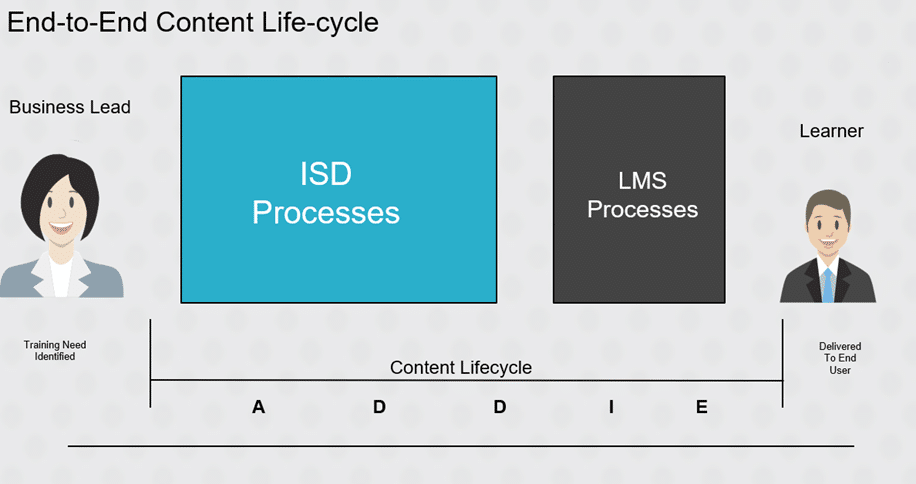 Now to add some detail around the sub-processes for the ISD and LMS areas (middle of image) and then traditional roles (top row). By understanding this basic layout and processes, you can better support the operations during troubleshooting and/or optimization.
Now to add some detail around the sub-processes for the ISD and LMS areas (middle of image) and then traditional roles (top row). By understanding this basic layout and processes, you can better support the operations during troubleshooting and/or optimization.
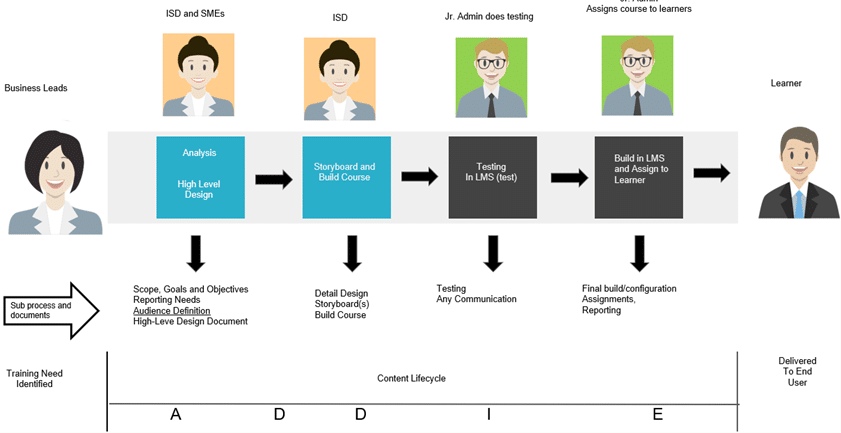 And finally, here are the basic roles and responsibilities associated with the image above:
And finally, here are the basic roles and responsibilities associated with the image above:
 *Please note that these images assume that the course is an eLearning course and being developed with an authoring tool that is not in the LMS.
*Please note that these images assume that the course is an eLearning course and being developed with an authoring tool that is not in the LMS.
3) Enhancing Troubleshooting and Triage Skills
Efficient problem resolution is crucial for maintaining the integrity and usability of an LMS. Developing strong troubleshooting and triage capabilities within your team can drastically reduce downtime and improve user satisfaction. This involves a systematic approach to identifying and addressing issues and fostering a culture of collaboration and knowledge-sharing among team members. Here are some basic examples of good and bad troubleshooting:
4)The Strategic Asset Management of Learning Content
Lastly, viewing learning content as a valuable asset necessitates a structured approach to its management. This includes maintaining an inventory of all learning materials, understanding their lifecycle, and establishing processes for updating and repurposing content. Such practices ensure the longevity of learning assets and maximize the return on investment in learning technologies. Using our content life-cycle graphic, here are two points in the process where you can access your learning assets and in different forms.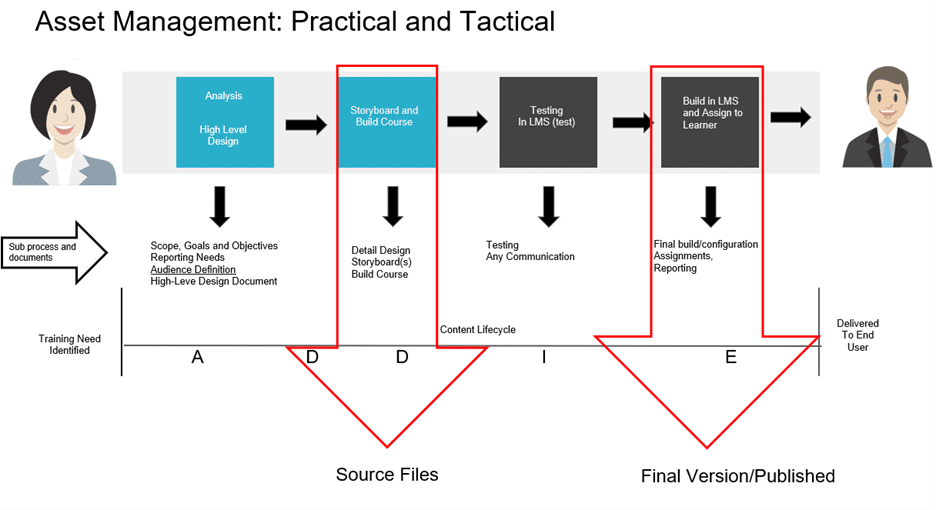 And in summary, here’s a short list to help you optimize your learning assets:
And in summary, here’s a short list to help you optimize your learning assets:
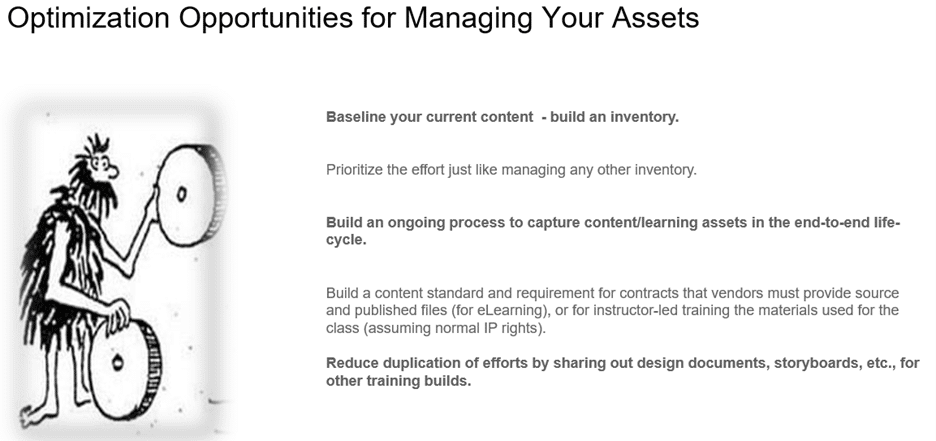 Optimizing an LMS requires a balanced approach that addresses both the technological and human elements of the system. By focusing on practical and tactical strategies, organizations can enhance their LMS’s functionality, improve the learner experience, and achieve greater operational efficiency. The journey to LMS optimization is ongoing, but with the right mindset and approach, it can lead to significant gains for any organization committed to excellence in learning and development.
Optimizing an LMS requires a balanced approach that addresses both the technological and human elements of the system. By focusing on practical and tactical strategies, organizations can enhance their LMS’s functionality, improve the learner experience, and achieve greater operational efficiency. The journey to LMS optimization is ongoing, but with the right mindset and approach, it can lead to significant gains for any organization committed to excellence in learning and development.
